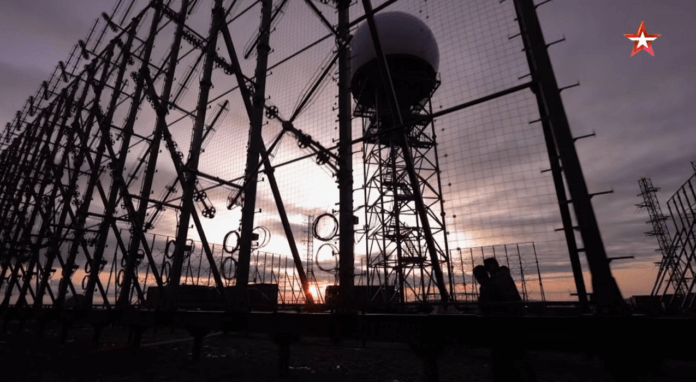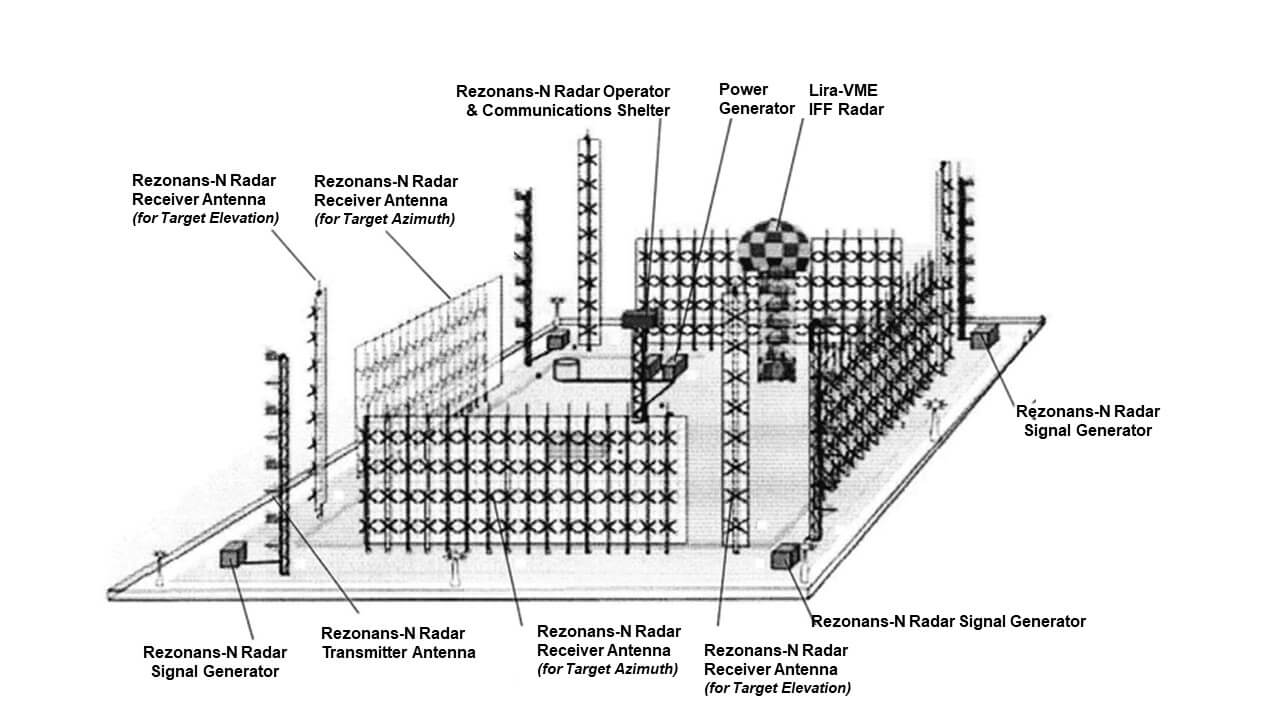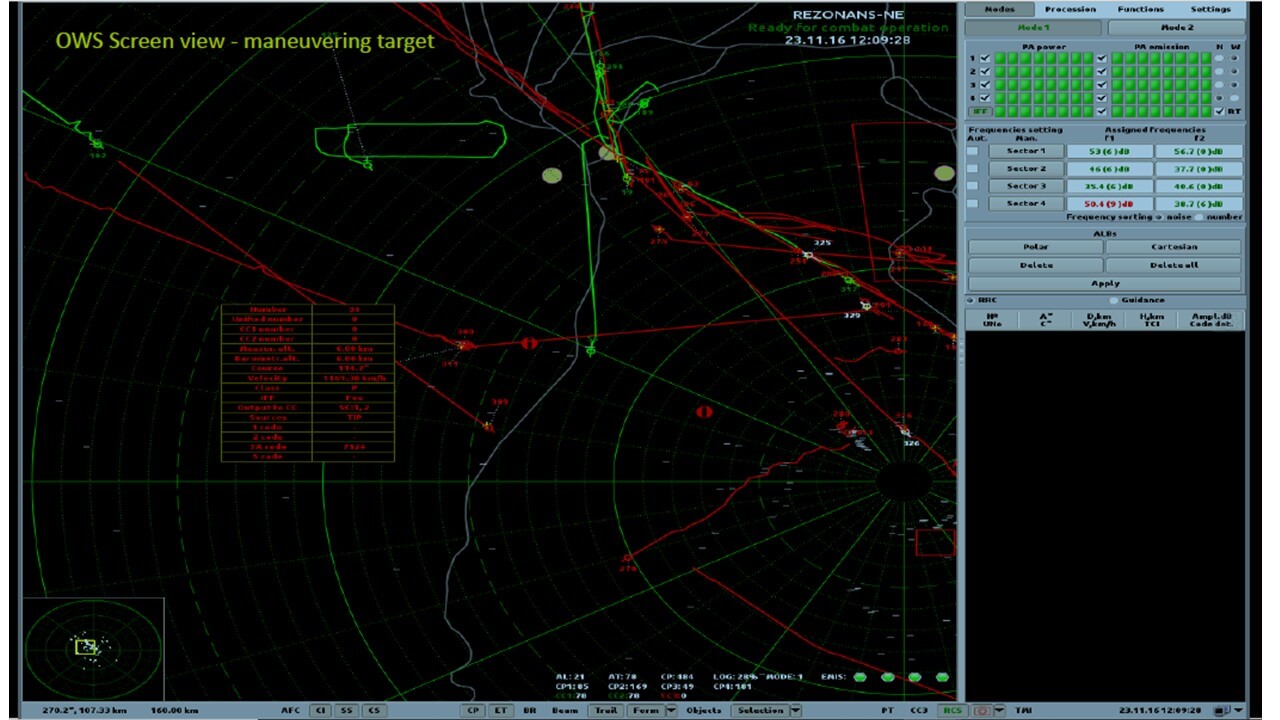Russian IADS Redux Part-1: Resonating with Resonance - Armada International

In the first part of a new Armada series aiming to demystify Russia’s Integrated Air Defence System we examine the Resonance-N/NE ground-based air defence radar family.
Armada is collaborating with EW Analytics, a company that conducts open-source electronic warfare research, in our Russian IADS Redux series.
The Resonance-N/NE is a family of ground-based air surveillance radars. Russian sources say the Resonance-N is the version in service with the country’s armed forces. The export version is known as the Resonance-NE. The sources continue that the Islamic Republic of Iran has acquired at least four systems which are designated locally as the Ghadir. In 2017, Algeria procured a Resonance-NE with Egypt following one year later. The locations of the Algerian and Egyptian radars can be found easily on social media. The picture below, also taken from social media, details where the Iranian radars are located.

Deployment
Several Resonance-N radars are believed to have been declared operational by Russia between 2014 and 2018. They are operated by the Russian Navy’s Northern Fleet and deployed with the Western Military District. According to the Barents Observer one radar is located in Zapolyarny, 15.5 kilometres/km (9.66 miles) from Russia’s border with Norway. Another is located in Cape Kanin on the Barents Sea coast 500km (310 miles) east of the Russo-Norwegian border. A third Arctic-based Resonance-N is located in Varandey, 1,093km (680 miles) from the Norwegian border. However, this is disputed. Some sources saying the radar is slightly further west on the coast at Indiga, 1,058km (658 miles) from the border. The fourth radar to be constructed in the Arctic is located in Ostrovnoy, also on the Barents Sea coast. This is 396km (246 miles) from the border. A fifth Resonance-N has been constructed at Rogachevo airbase on the island of Novaya Zemlya betwixt the Barents and Kara seas. The Barents Observer report said the Russian government intends to build a chain of Resonance-N radars. These will cover the coasts of the Barents, Kara and East Siberian seas.
Performance
The radars provide strategic surveillance of Russia’s Arctic air approaches, deployed to detect, locate and track incoming air-breathing threats. These include strategic bombers and surface-to-surface/air-to-surface cruise missiles. They are also reportedly capable of detecting and tracking incoming ballistic missiles.
The Resonance-N uses the very high frequency waveband. Within that waveband EW Analytics says that the radar may transmit specifically between 35MHz to 70MHz. Generally speaking, very high frequency wavebands are good for detecting targets with low Radar Cross Sections (RCSs). Russian airpower experts have probably calculated correctly that any US-led conventional and/or nuclear air attack on Russia will see widespread use of low-RCS platforms and weapons. This could include US Air Force Northrop Grumman B-2A Spirit and forthcoming B-21 Raider strategic bombers. Such aircraft maybe escorted by Lockheed Martin F-22A Raptor and/or F-35A Lightning combat aircraft. All these platforms have low radar cross sections. Lockheed Martin AGM-158 Joint Air-to-Surface Standoff Missile and Raytheon’s AGM-129A Advanced Cruise Missile, both of which also have a low RCS design, could also be used in such a scenario.
Russian sources seen by Armada say claim the radar can detect a fighter-sized target (presumably with an RCS of circa 1.2m2) at 32,808 feet/ft (10,000 metres/m) at 189nm (300km) range. The sources continue that the radar offers accuracy to within 300 metres (91 feet) for range. The margin of error in azimuth and elevation is 1.5 degrees. The margin of error for velocity is one knot (1.8 kilometres-per-hour). The Resonance-N’s maximum range for undisclosed air-breathing targets is 324nm (600km). They also claim a maximum detection range of 594nm (1,100km) and 328,084ft (100,000m) altitude. The radar’s elevation angle is between 1.5 and 80 degrees and it can track up to 500 targets.
In terms of physical architecture the radar has four arrays, each providing 90 degrees of azimuth giving full 360 degrees surveillance. The large arrays act as the receiving antenna determining target azimuth. Each large array is flanked by two vertical receiving tower-mounted antennas for determining target elevation. The radar signal is transmitted by four tower-mounted antennas positioned at each corner of the four arrays. A dome-shrouded Lira-VME identification friend or foe secondary surveillance radar is mounted on a tower in the centre of the arrays.

The Resonance-N’s radar waveform comprises a long duration pulse for ballistic missile detection and a short duration pulse for detecting low RCS aircraft. EW Analytics has found authoritative documentation which shows specific examples of Resonance-N frequencies which include, but are not limited to, 51.3MHz (long duration pulses) and 55.5MHz (short pulses) as well as frequencies of 49.4MHz (long pulses) and 50.4MHz (short pulses). The radar may automatically monitor the 35MHz to 70MHz waveband to determine if its transmissions are being jammed. If jamming is detected, it may be possible for the radar operator to blank out sections of radar coverage where the jamming is coming from. However, this will degrade the radar’s coverage of that patch of sky. Additional electronic counter-countermeasure capabilities include agility across between 350 and 500 distinct transmission frequencies.
Chain of Command
Radar data generated by a Resonance-N radar is probably sent to Russian Air Force Aviation Guidance Points (AGPs) which act as ground-controlled interception centres. EW Analytics says the data may be sent to the AGPs across satellite communications, conventional fixed telecommunications and/or radio. Once at the AGP, personnel will task fighters to engage the threat vectoring them based on the Resonance-N’s data.
Next month, Part 2 of Armada’s Russian IADS Redux series will examine the Russian IADS’ 12A6 Sopka-2 ground-based air surveillance radar. Stay tuned!

by Dr. Thomas Withington
Read our other Russian IADS Redux articles:
- Russian IADS Redux Part-2: Hilltop View
- Russian IADS Redux Part-3: Strategic Skywatchers
- Russian IADS Redux Part-4: Missing Link
- Russian IADS Redux Part-5: Reset Password?
Sign up to our Electronic Warfare Newsletter:


No comments:
Post a Comment